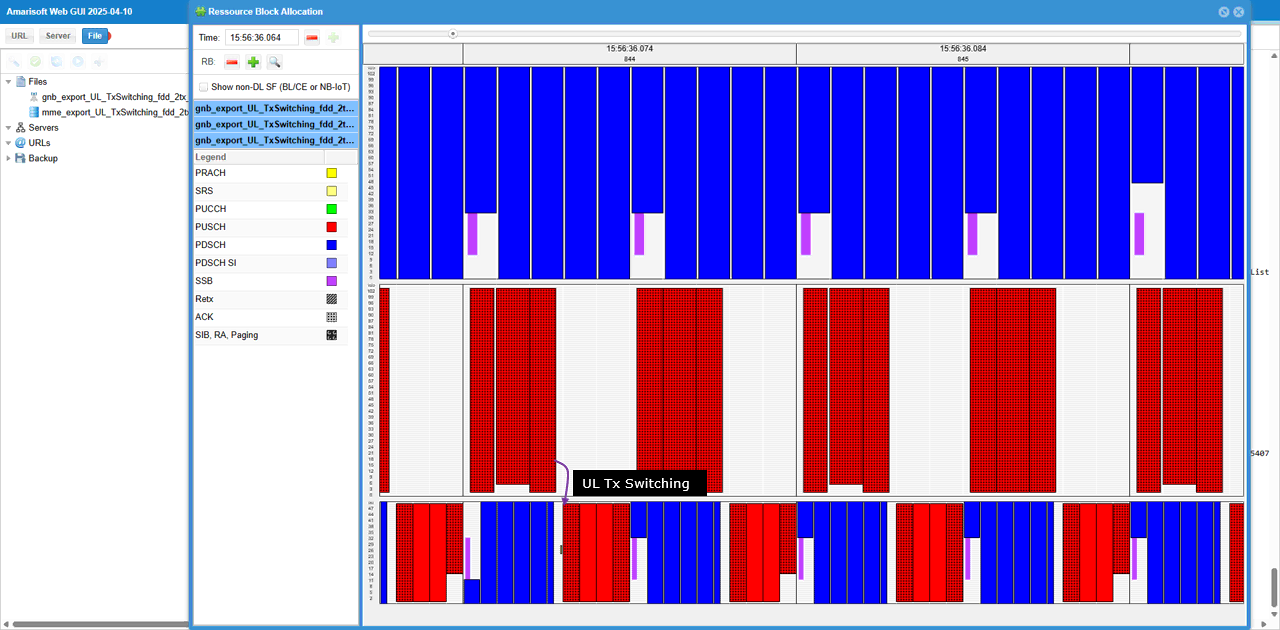NR SA UL TxSwitching
The purpose of this tutorial is to show you how to configure and test UL Tx Switching. The fundamental idea behind UL Tx Switching is can be illustrated below. The basic Idea can be summarized as below
- Most of UE has limitation of Tx antenna (max two Tx antenna for most UE)
- So when they are configured for a communication setup that require more than two Tx antenna as shown in <Case A>. Two Tx antenna is not enough for fully utilizing the confituration.
- In practice with this limitation, UE can switch between mulciple carriers that best utilize the resource but still does not use more than two Tx antenna
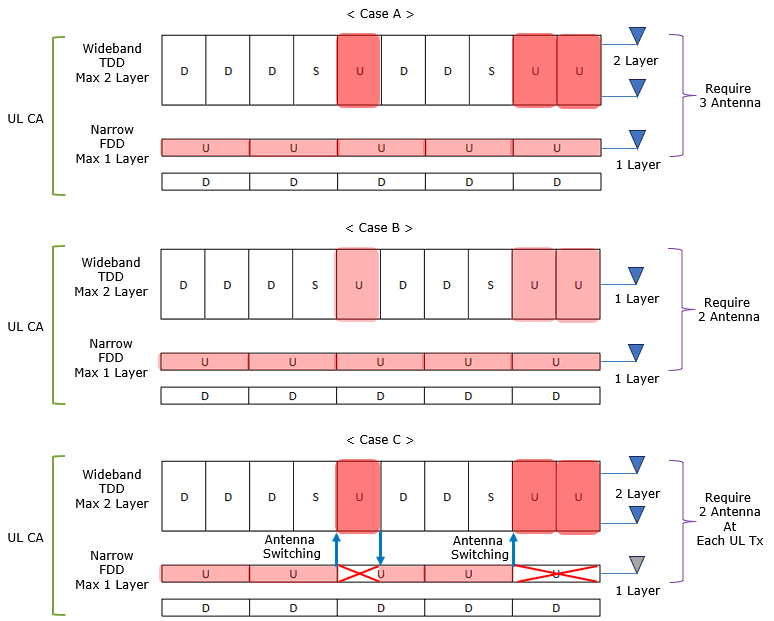
Image Source : Sharetechnote
Table of Contents
- NR SA UL TxSwitching
Test Setup
Test setup for this tutorial is as shown below.
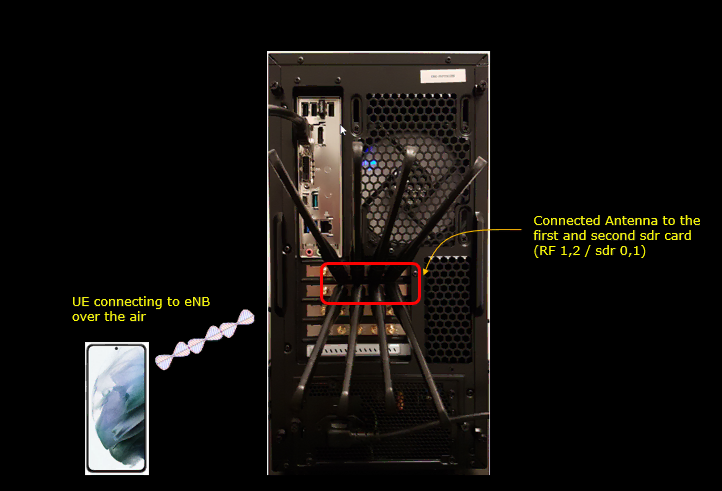
Key Configuration Parameters
Followings are important configuration parameters for this tutorial. You may click on the items for the descriptions from Amarisoft documents.
Test 1 : 1TX -> 2TX Switching, switchedUL
This test is to test and show the concept of a simplest cases of UL Tx Switching. It is the case where (according to the scheduling by gNB) UE switches from 1Tx carrier to 2Tx carrier with switchedUL mode.
The specific scenation implemented in this test is illustrated as below

Configuration
I used the gnb_tx_switch_fdd_1tx_tdd_2tx_slot0.cfg on gNB (
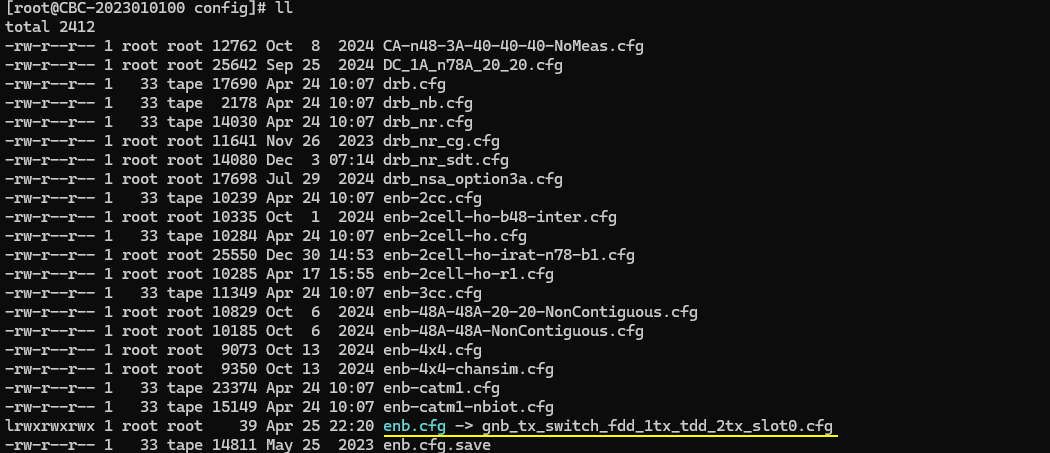
In gnb_tx_switch_fdd_2tx_tdd_2tx_slot0.cfg , followings are configured.
First note that two antenna is configured for DL for both carriers (N_NR_ANTENNA_DL = 2) and for UL for both carriers (N_ANTENNA_UL = 2). In this test, N_ANTENNA_UL = 2 does not necessarily mean 2 layer(rank 2). The number of layer(max rank) will be specified to 1 or 2 depending on the situation. (

This is the configuration for the first cell. The cell is configured to be FDD and assigned as "carrier1".

Following is the configuration of the second cell. In UL Tx Switching situation, the second cell is configured to TDD and assigned as 'carrier2. In most of the use case, the max rank of carrier 2 is set to 2. The mode of UL Tx Activation is set to 'ulquality'. In this mode, UL Tx Switching happens based on the quality of UL channel. UL Tx Switching will be activated when the signal on carrier 2 (as measured by SRS) has an UL rank greater than 1 and an UL CQI above ul_quality_ri2_cqi_threshold
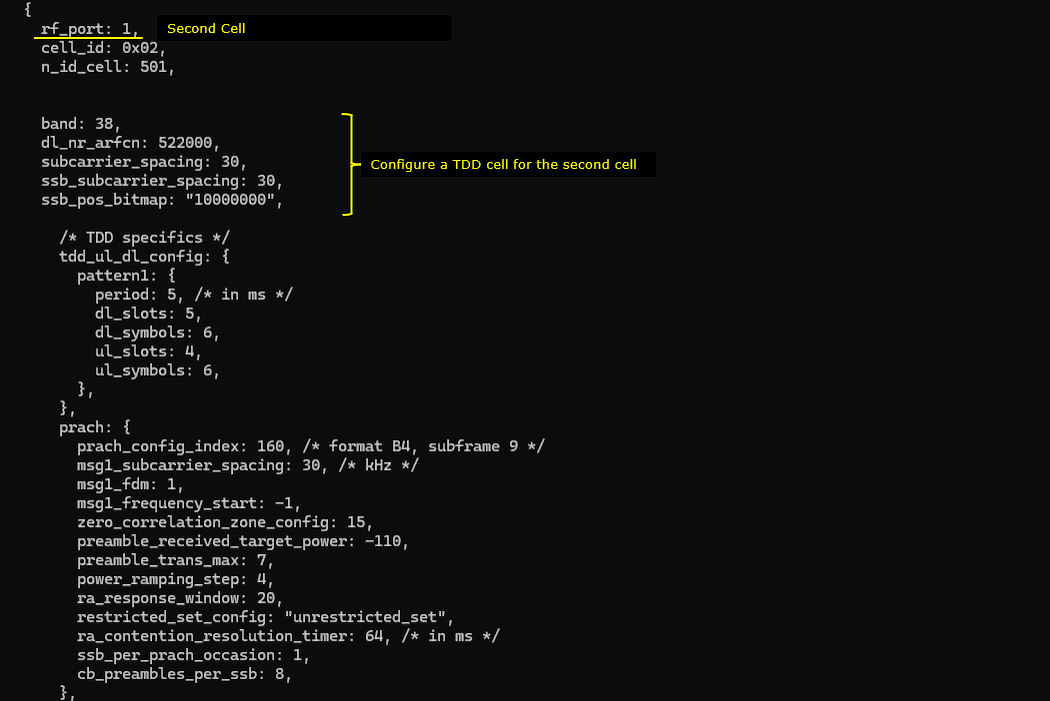

Perform the Test
Check if the cell is configured as intended. Check out the output of 'cell phy' and cell command.

Now power on UE and wait until it completes attach and establishment of 2CC CA for both uplink and downlink.

Log Analysis
The first thing to be checked out in the log is about whether the uplinkTxSwitchRequest is configured in ueCapabilityEnquiry.
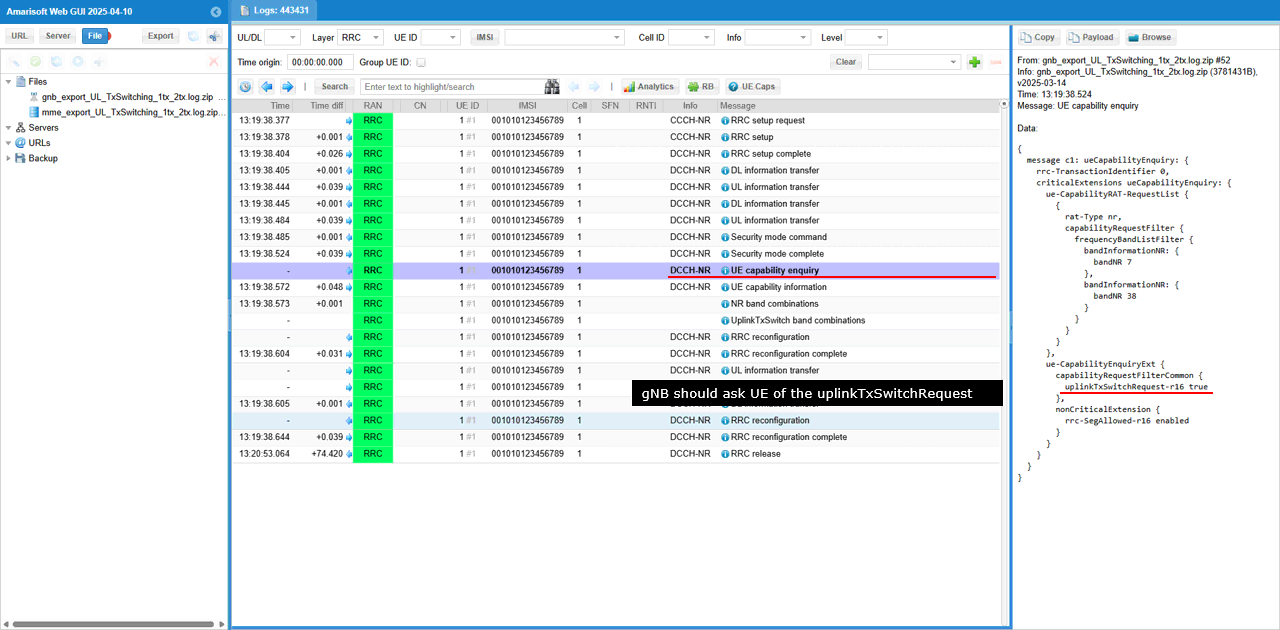
Then check out the band combination for UL Tx Switch in UE capability Information are properly set as you expected. Make it sure and check, check, check on this since there are many cases where a certain feature is not activated properly due to mismatch between what UE are really capable and what is configured in configuration file.
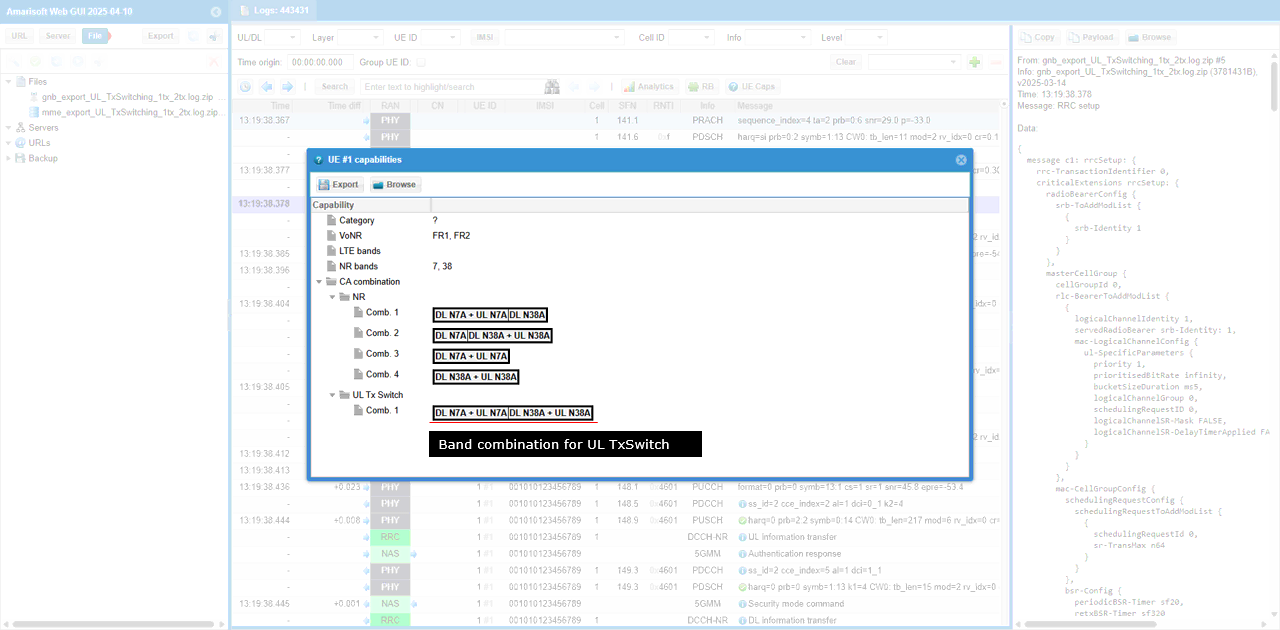
In case of UL Tx UL Switch Release 16, just a few notification would be enough (uplinkTxSwitchingPeriod, uplinkTxSwitching-OptionSupport for example as in this case).
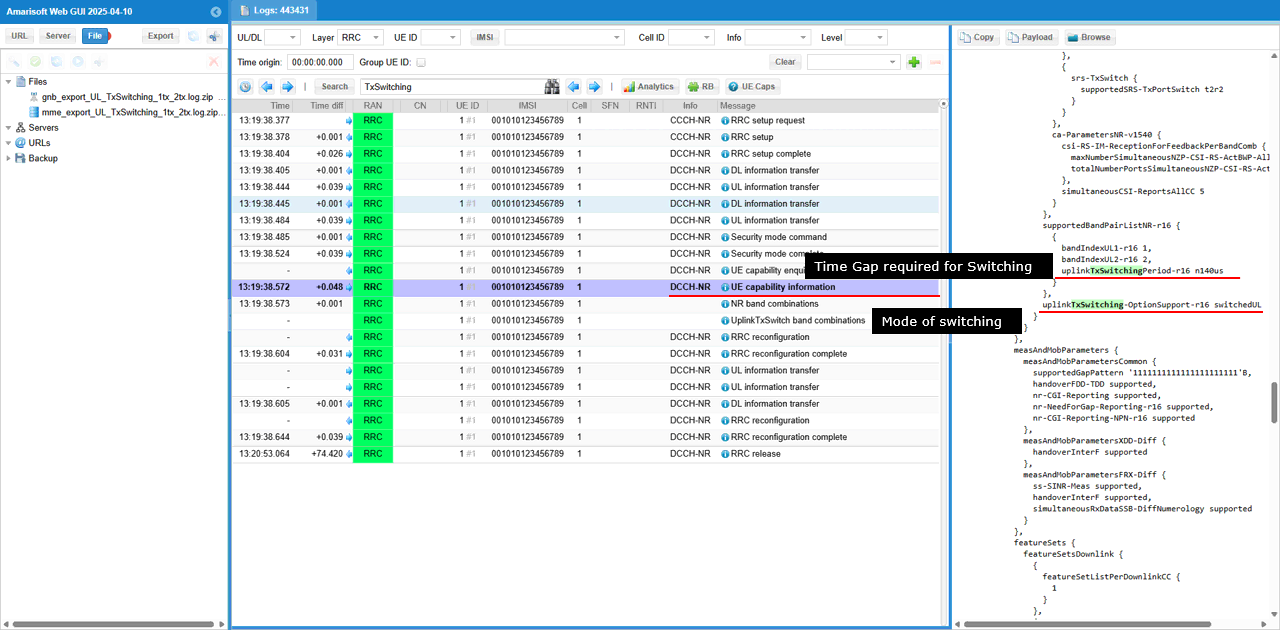
Once gNB think it got everything to make any decision to enable UL Tx Switching, it configures the switching in RRC Reconfiguration.
First gNB configures maxRank for the carrier1 (If the carrier1 is PCC cell as in this case, you need to check this under spCellConfig IE) in RRC Reconfiguration.
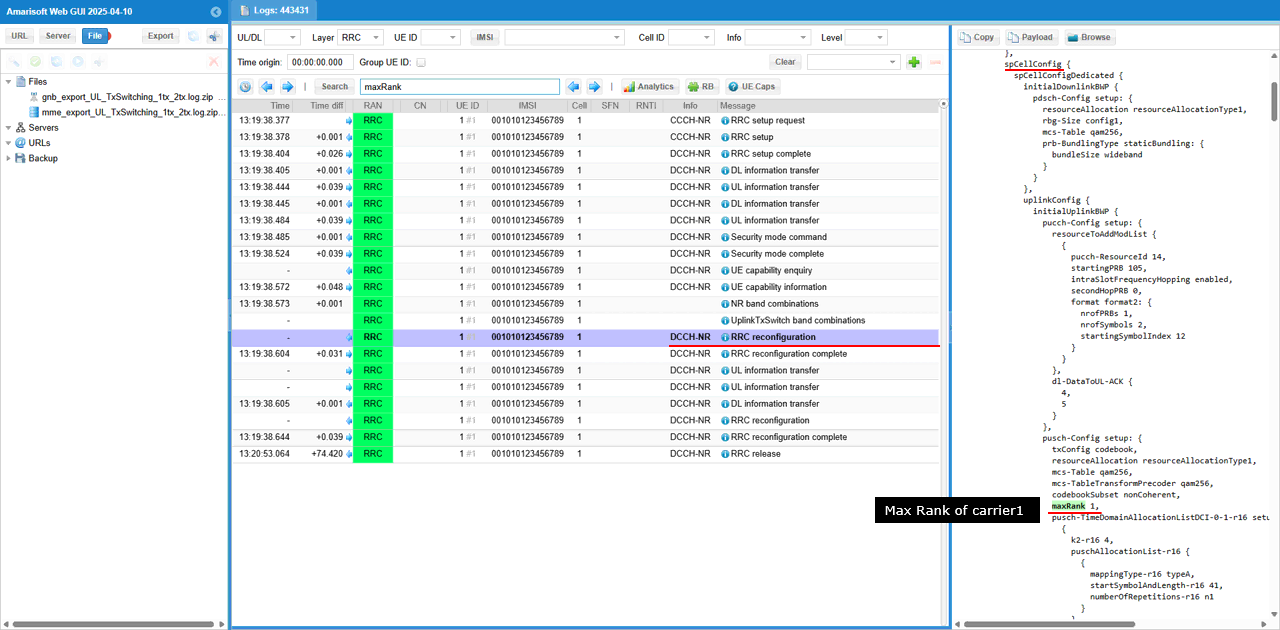
Then it configures uplinkTxSwitchingPeriodLocation and uplinkTxSwitchingCarrier in uplinkTxSwitching IE. If the switching happens between PCC and SCC in UL CA, usually PCC is designated to be carrier1 and uplinkTxSwitchingPeriodLocation is set to TRUE.
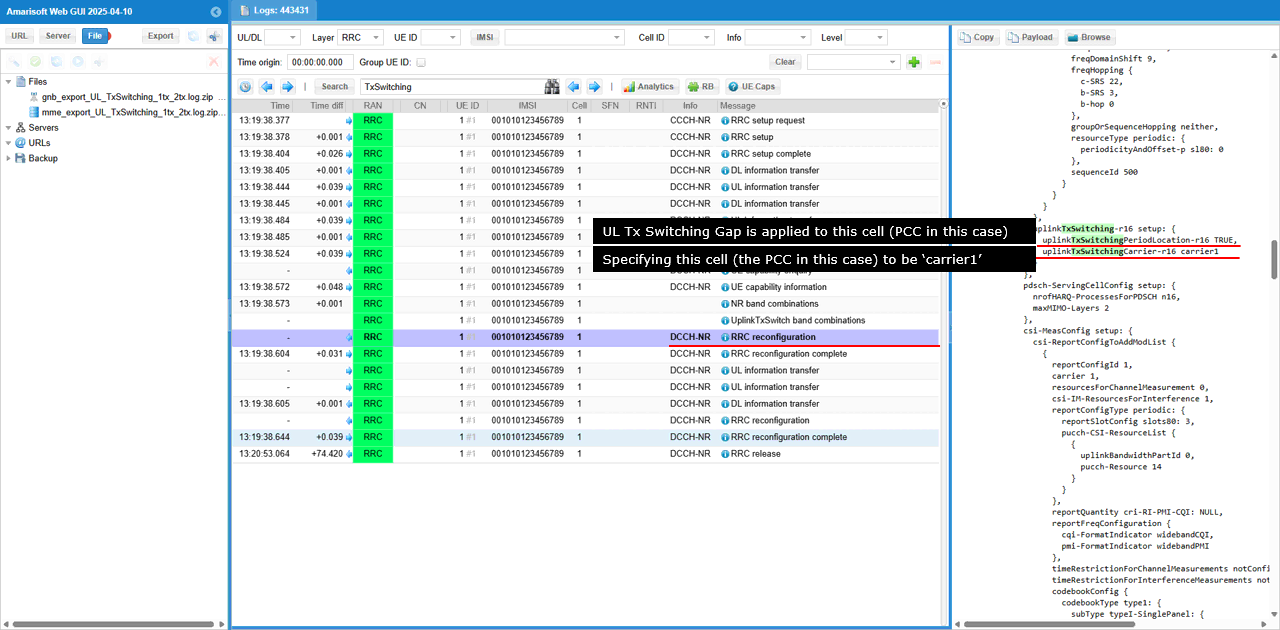
Then gNB configures UL maxRank of carrier2 to 2. You can confirm on this with maxRank IE of SCC UL in this test.
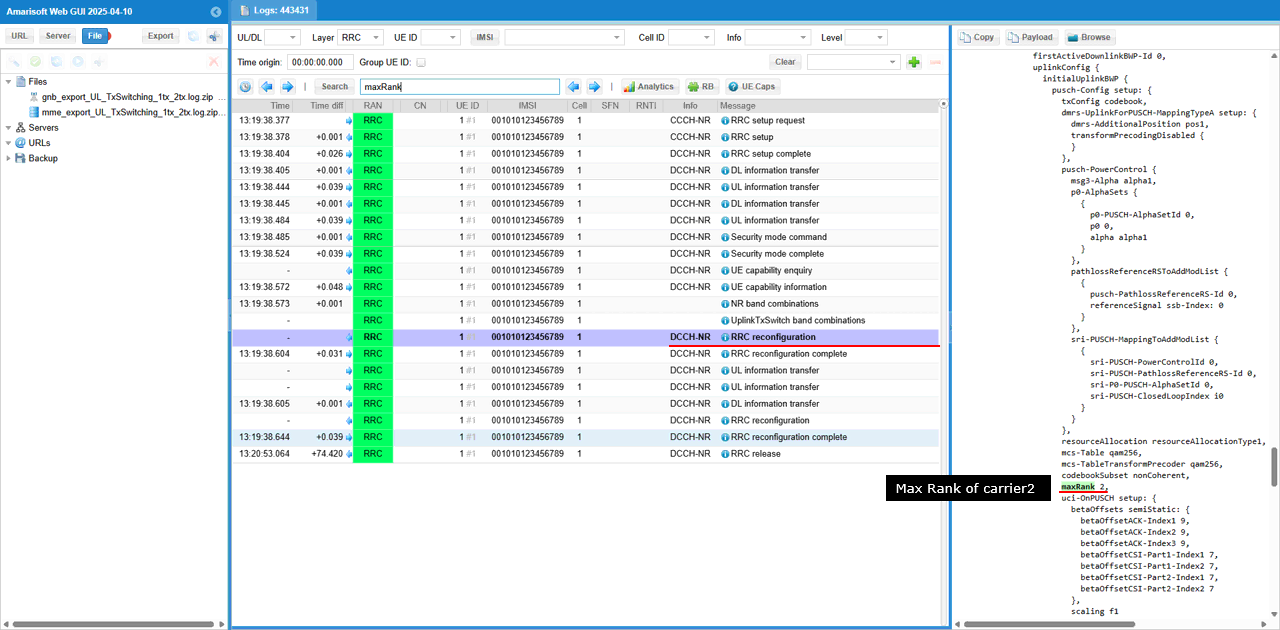
Then it configures uplinkTxSwitchingPeriodLocation and uplinkTxSwitchingCarrier in uplinkTxSwitching IE. If the switching happens between PCC and SCC in UL CA, usually SCC is designated to be carrier2 and uplinkTxSwitchingPeriodLocation is set to FALSE.
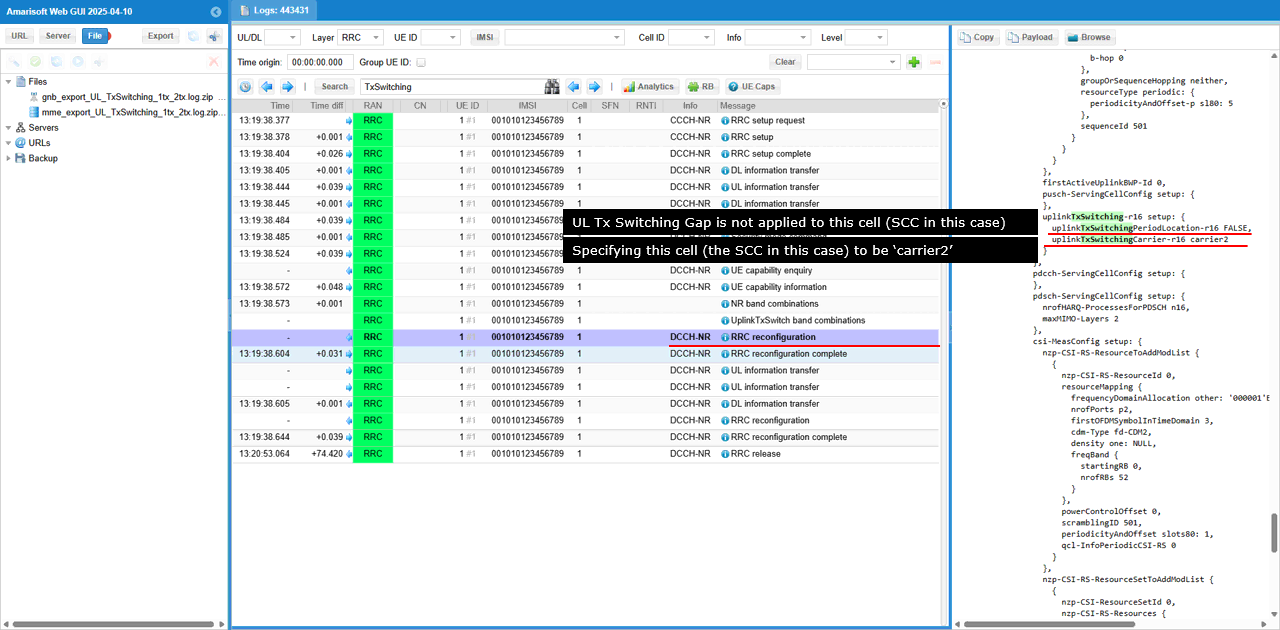
Then gNB specifies uplinkTxSwitchingOption ether to switchedUL or dualUL. In this test, we configured it to switchedUL.
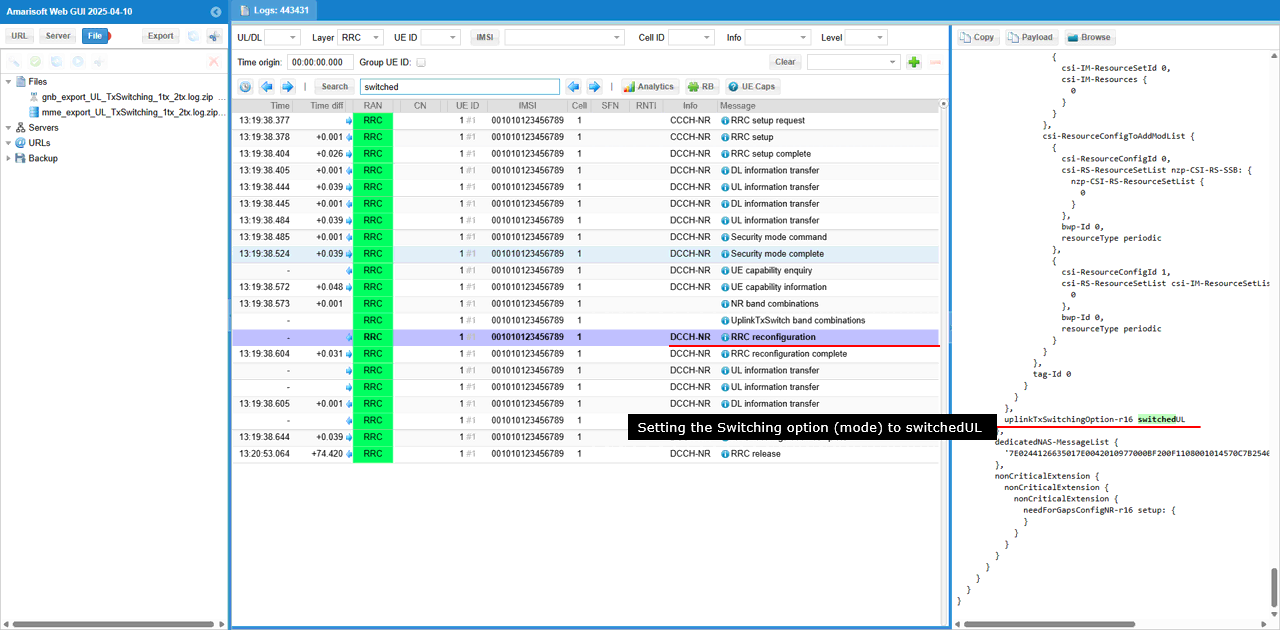
You can visually confirm how UL switching happens in RB Map plot.
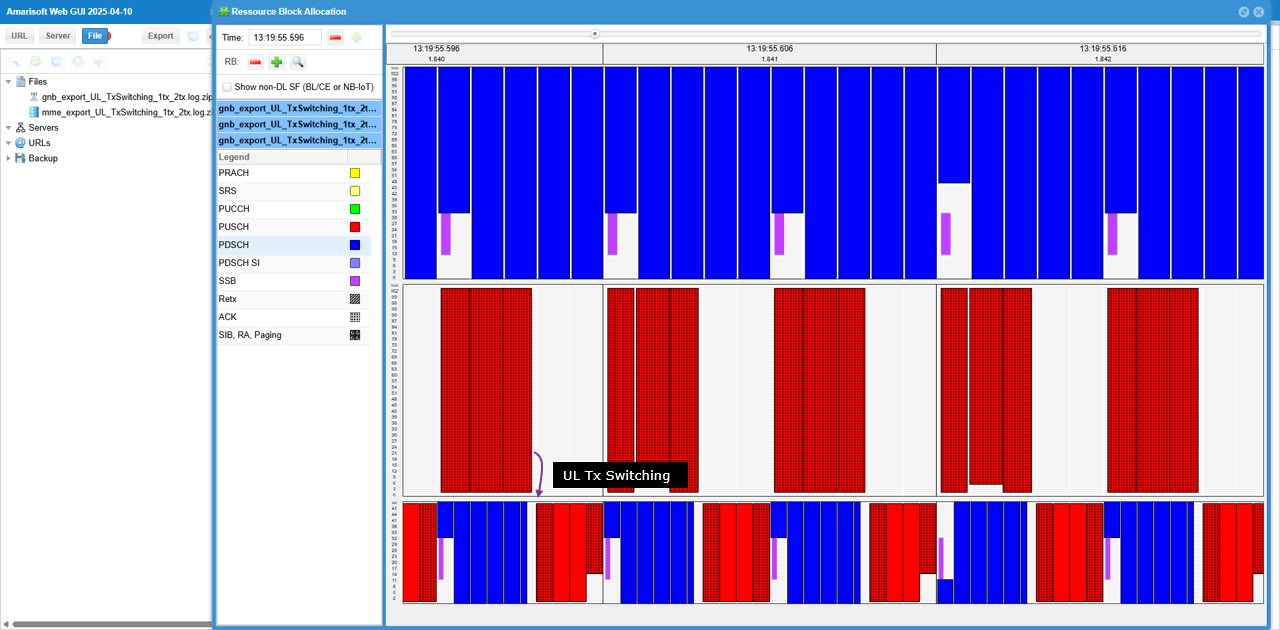
Test 2 : 2TX -> 2TX Switching, switchedUL
This test is to test and show the concept of a simplest cases of UL Tx Switching. It is the case where (according to the scheduling by gNB) UE switches from 1Tx carrier to 2Tx carrier with switchedUL mode.
The specific scenation implemented in this test is illustrated as below

Configuration
I used the gnb_tx_switch_fdd_2tx_tdd_2tx_slot0.cfg on gNB (
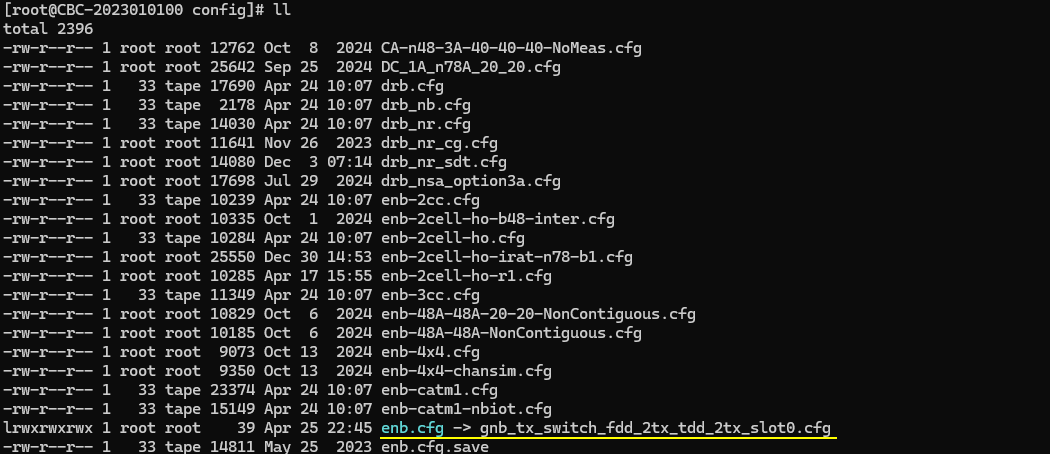
In gnb_tx_switch_fdd_2tx_tdd_2tx_slot0.cfg , followings are configured.
First note that two antenna is configured for DL for both carriers (N_NR_ANTENNA_DL = 2) and for UL for both carriers (N_ANTENNA_UL = 2). In this test, N_ANTENNA_UL = 2 does not necessarily mean 2 layer(rank 2). The number of layer(max rank) will be specified to 1 or 2 depending on the situation. (

This is the configuration for the first cell. The cell is configured to be FDD and assigned as "carrier1".

Following is the configuration of the second cell. In UL Tx Switching situation, the second cell is configured to TDD and assigned as 'carrier2. In most of the use case, the max rank of carrier 2 is set to 2. The mode of UL Tx Activation is set to 'ulquality'. In this mode, UL Tx Switching happens based on the quality of UL channel. UL Tx Switching will be activated when the signal on carrier 2 (as measured by SRS) has an UL rank greater than 1 and an UL CQI above ul_quality_ri2_cqi_threshold


Perform the Test
Check if the cell is configured as intended. Check out the output of 'cell phy' and cell command.

Now power on UE and wait until it completes attach and establishment of 2CC CA for both uplink and downlink.

Log Analysis
The first thing to be checked out in the log is about whether the uplinkTxSwitchRequest is configured in ueCapabilityEnquiry.
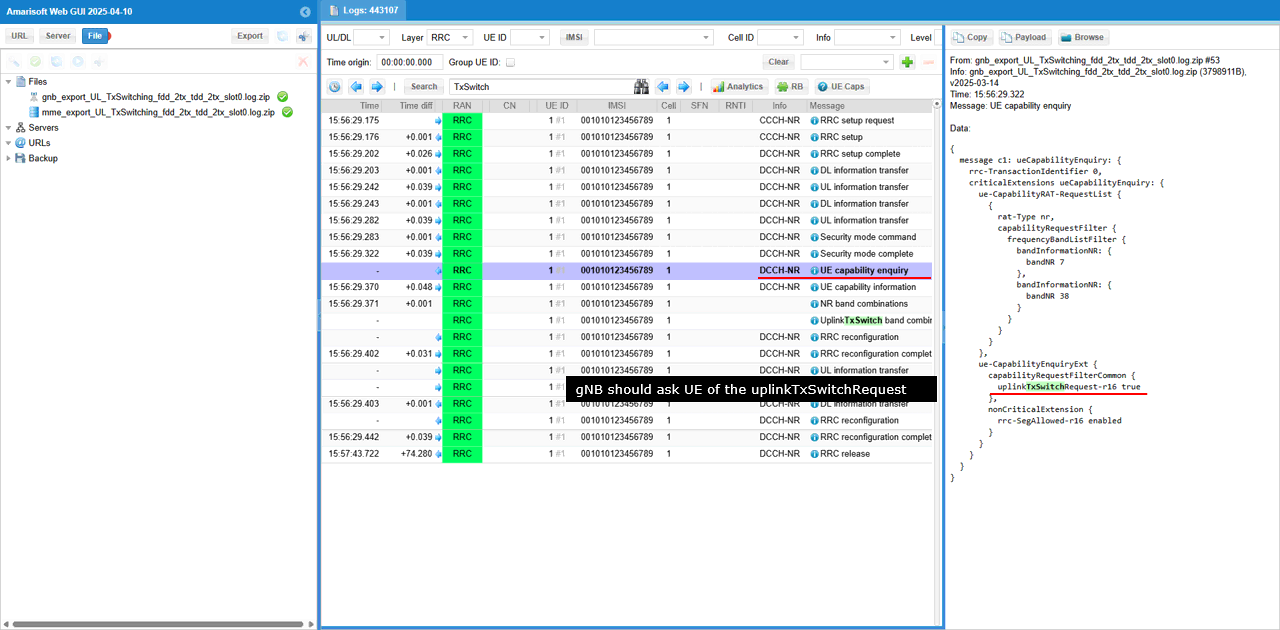
Then check out the band combination for UL Tx Switch in UE capability Information are properly set as you expected. Make it sure and check, check, check on this since there are many cases where a certain feature is not activated properly due to mismatch between what UE are really capable and what is configured in configuration file.
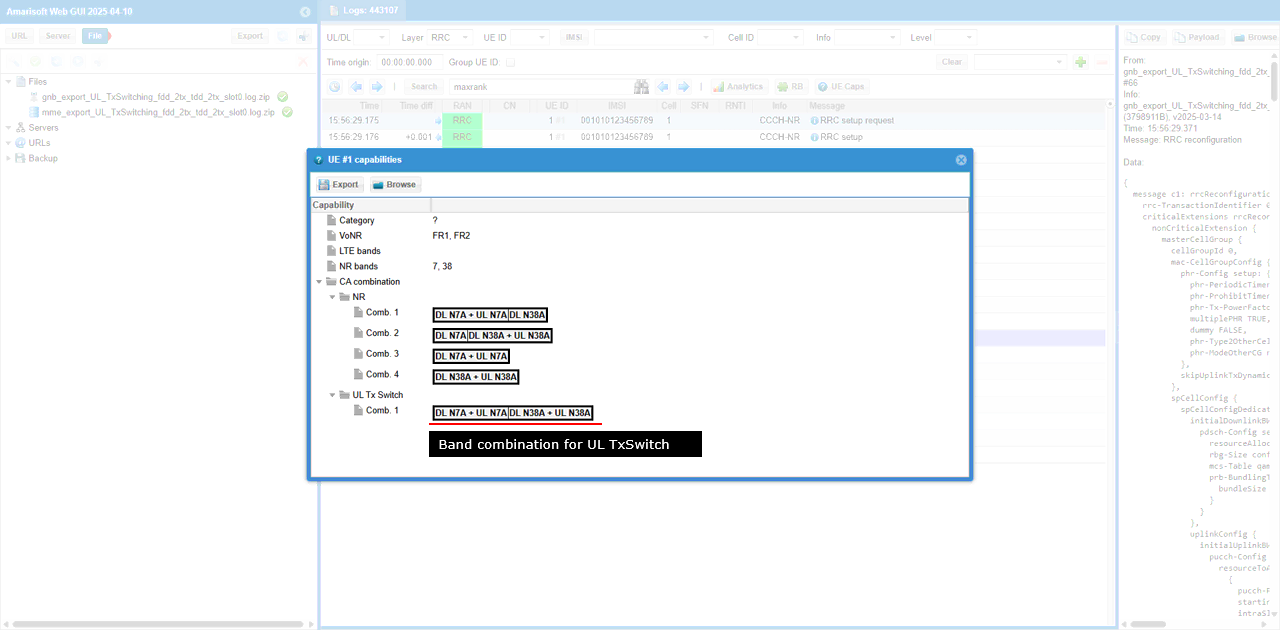
In case of UL Tx UL Switch Release 16, just a few notification would be enough (uplinkTxSwitchingPeriod, uplinkTxSwitching-OptionSupport for example as in this case).
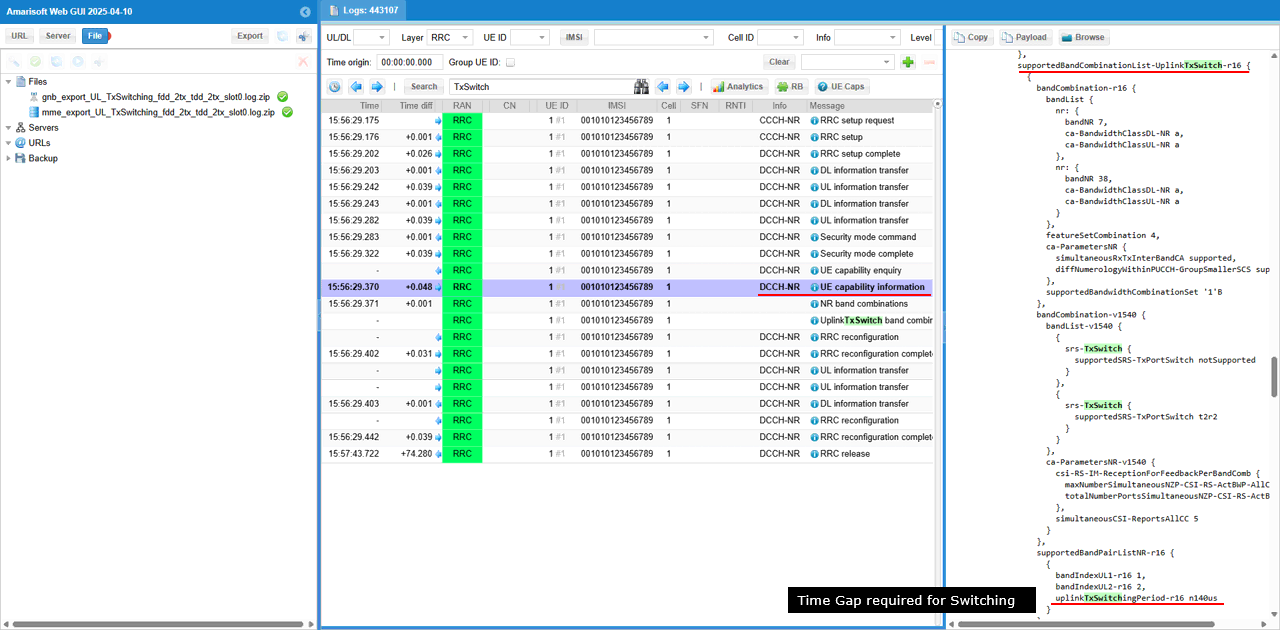
In case of UL Tx UL Switch Release 17, you would see the Rel 17 feature notification like uplinkTxSwitchingPeriod2T2T.
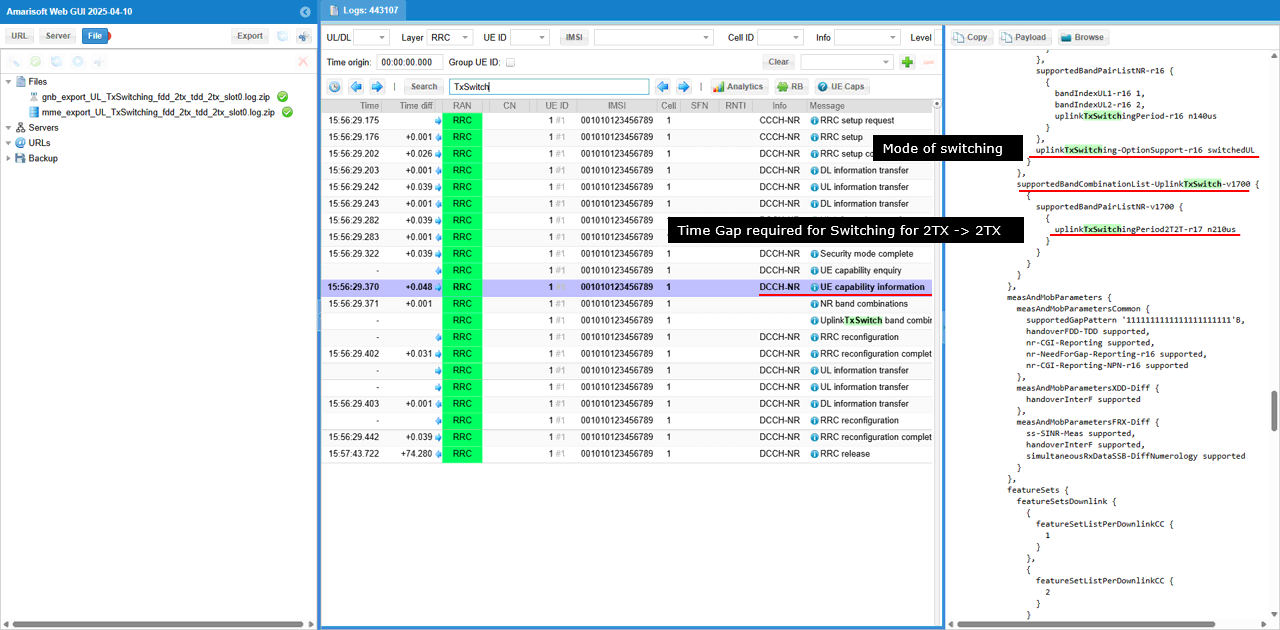
Once gNB think it got everything to make any decision to enable UL Tx Switching, it configures the switching in RRC Reconfiguration.
First gNB configures maxRank for the carrier2 (If the carrier1 is PCC cell as in this case, you need to check this under spCellConfig IE) in RRC Reconfiguration.
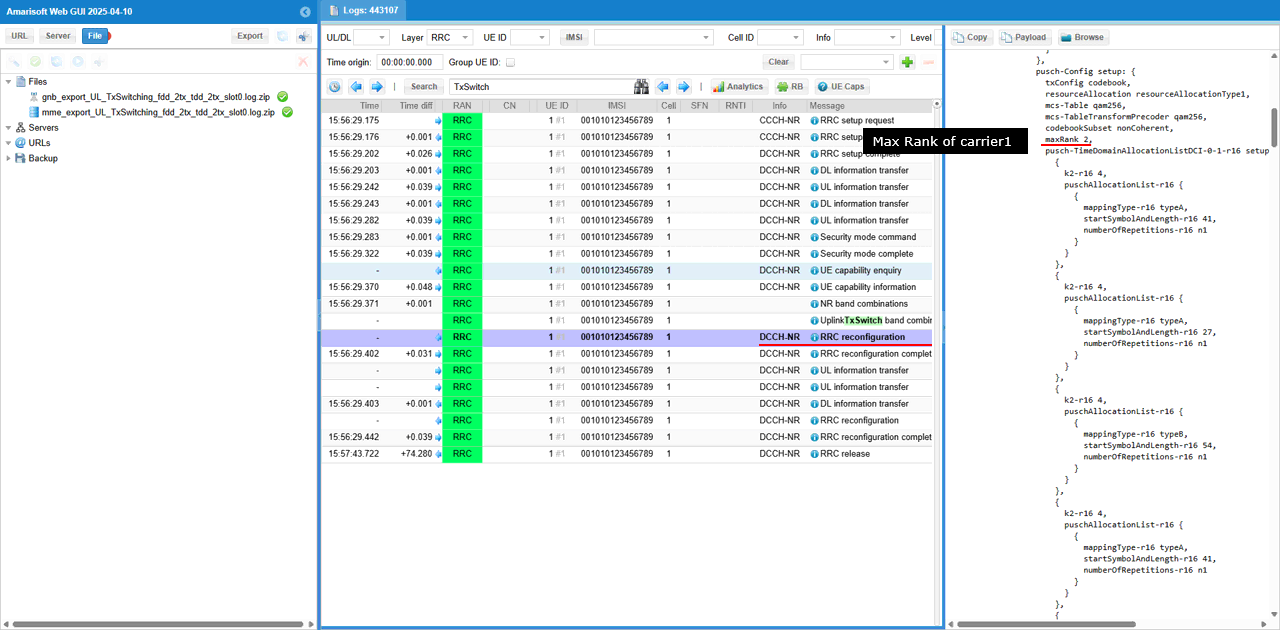
Then it configures uplinkTxSwitchingPeriodLocation and uplinkTxSwitchingCarrier in uplinkTxSwitching IE. If the switching happens between PCC and SCC in UL CA, usually PCC is designated to be carrier1 and uplinkTxSwitchingPeriodLocation is set to TRUE.
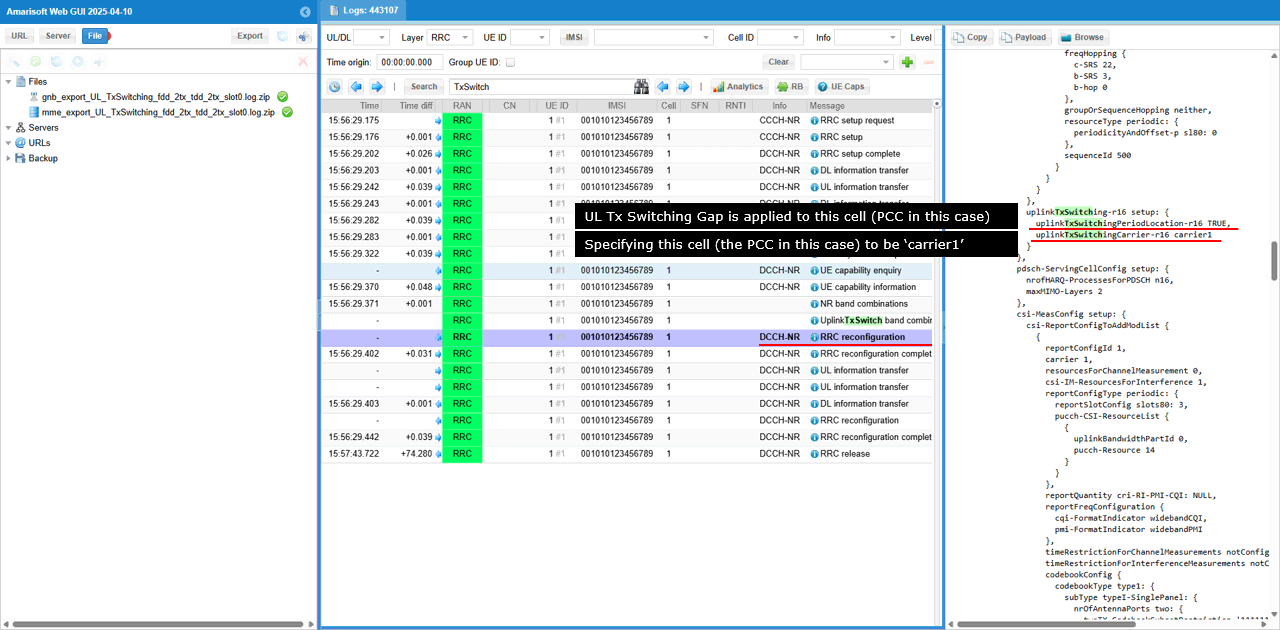
Then gNB configures UL maxRank of carrier2 to 2. You can confirm on this with maxRank IE of SCC UL in this test.
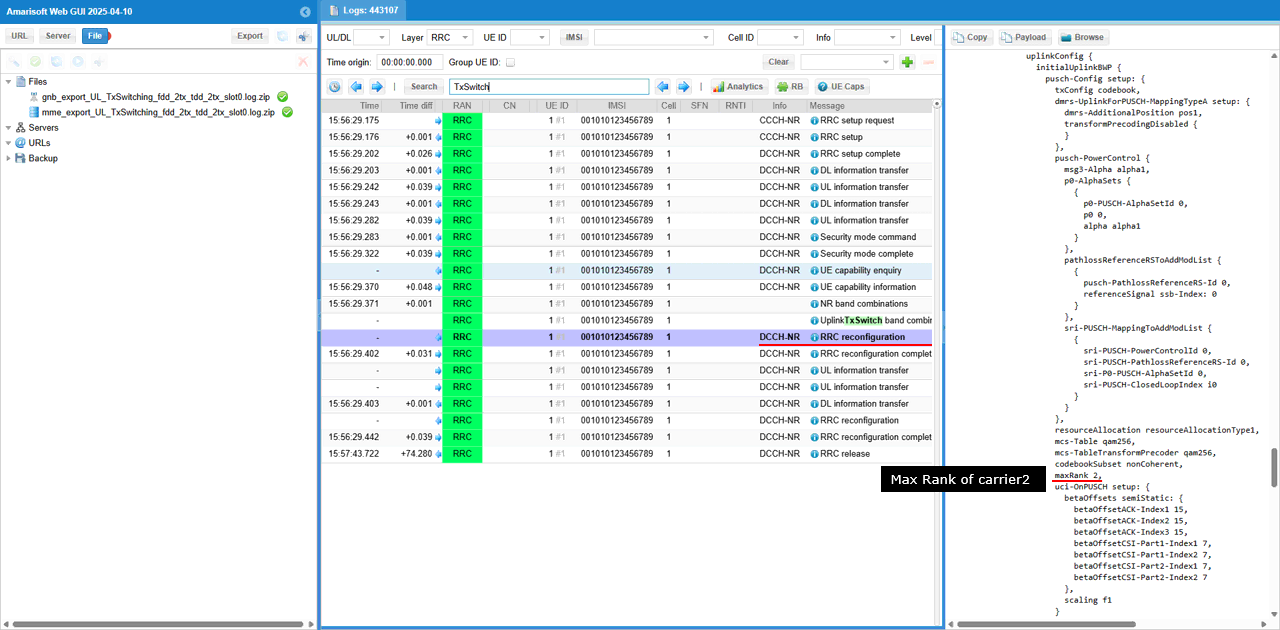
Then it configures uplinkTxSwitchingPeriodLocation and uplinkTxSwitchingCarrier in uplinkTxSwitching IE. If the switching happens between PCC and SCC in UL CA, usually SCC is designated to be carrier2 and uplinkTxSwitchingPeriodLocation is set to FALSE.
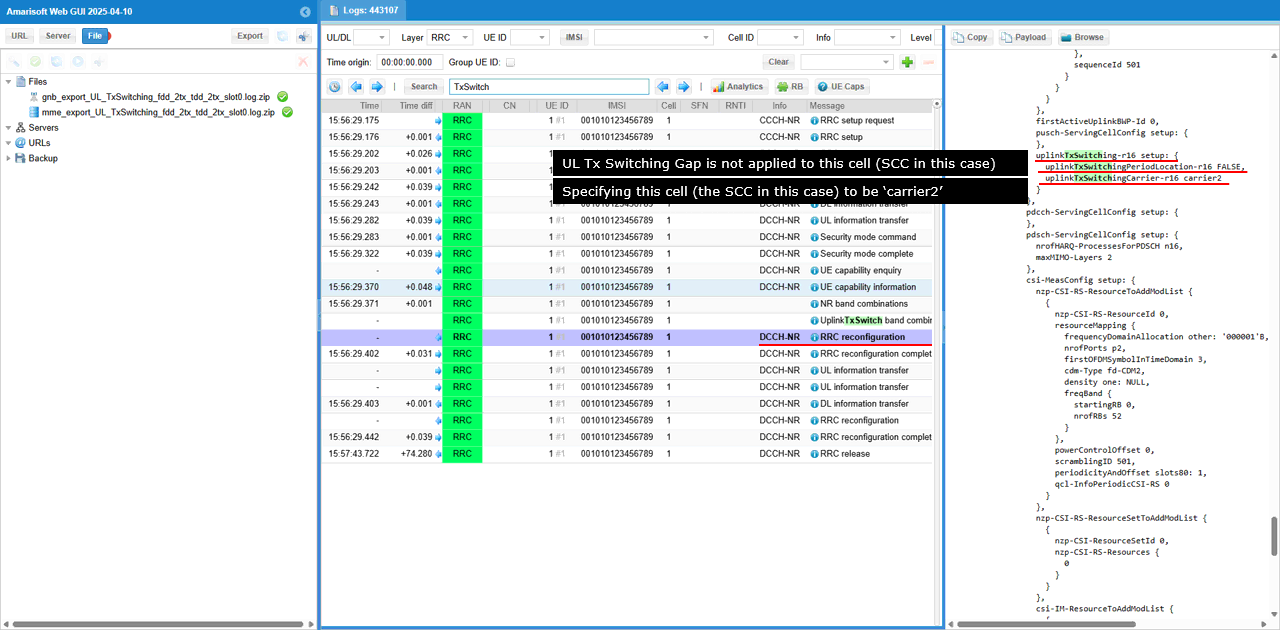
Then gNB specifies uplinkTxSwitchingOption ether to switchedUL or dualUL. In this test, gNB configured it to switchedUL and enable uplinkTxSwitching-2T-Mode..
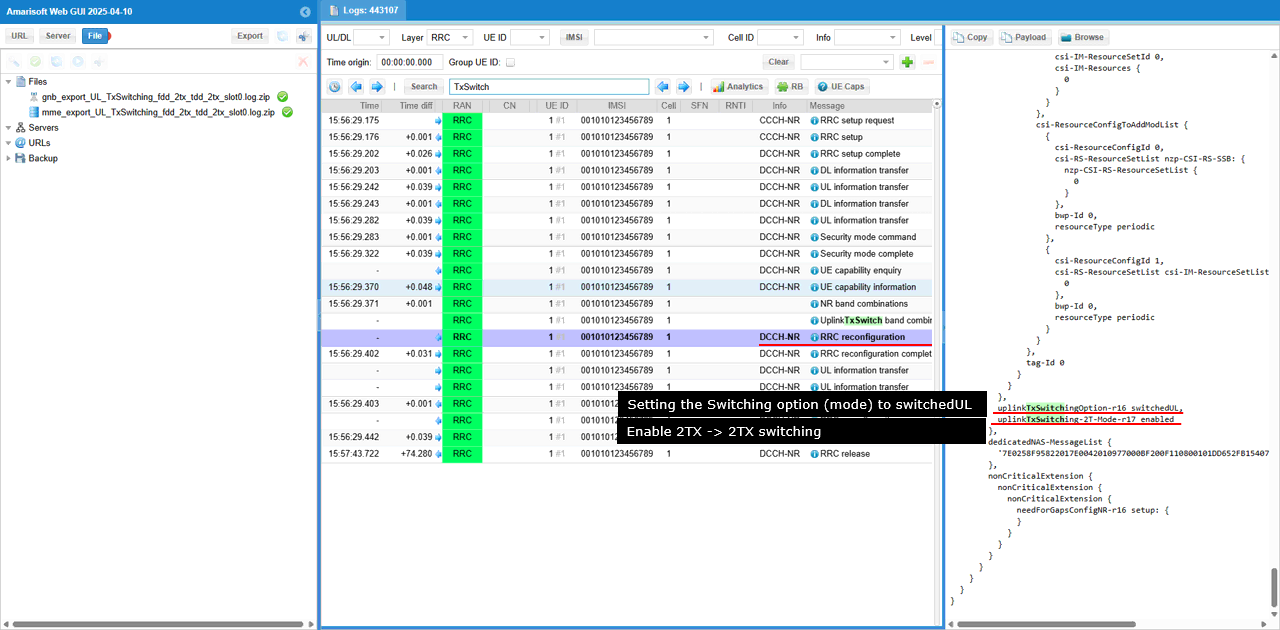
You can visually confirm how UL switching happens in RB Map plot.
